Rene reported ]that she saw Magicicada nymphs in holes in a friend’s garden in SE Elmhurst Illinois.
We’re currently expecting the emergence to start on May 24th, but the hot weekend might have roused the cicadas to an early start. We’ll see.
Dedicated to cicadas, the most amazing insects in the world.
Rene reported ]that she saw Magicicada nymphs in holes in a friend’s garden in SE Elmhurst Illinois.
We’re currently expecting the emergence to start on May 24th, but the hot weekend might have roused the cicadas to an early start. We’ll see.
The Return of the Cicadas 17-Year cicada documentary will be airing on PBS in the Brood XIII emergence area soon. As soon as next Thursday, 4/26. Set your Tivo/DVR to record it!
Periodical cicadas are among the most unique creatures in the animal kingdom. After spending 17 years underground as juveniles, they emerge for a brief, cacophonous population explosion aboveground, where they transform into adults, mate, lay eggs and die off after only a few weeks.
WFYI presents Return of the Cicadas, an original local documentary produced in association with the Indiana University Research and Teaching Preserve. Producer Samuel Orr followed the life cycle of Brood X, which made its momentous ascension in the spring of 2004. It accounted for one of the largest insect outbreaks on Earth. Many different broods exist, on unique 17-year schedules. Brood XIII is due to arrive in northern Indiana this May.
Through stunning close-up video and time-lapse photography, Orr and others offer an amazing glimpse at the lives of these enigmatic insects. The documentary was made possible by the research of IU biologist Keith Clay through grants provided by the National Science Foundation. The NSF and Science Magazine recognized the production with a national award for a short 5-minute film on the Brood X outbreak.
insects from the forests of Chiang Mai is an excellent website featuring many photos and audio recordings of cicadas from Thailand. If you want to explore cicadas around the world, it’s a great place to start.
One of the fun things about large 17-year cicada emergences like Brood XIII is the pop culture that emerges from the imaginations of inspired cicada maniacs: people write and record songs, perform plays and musicals, make independent films, paint paintings, wake websites, etc.
Today we got an email from a song writer named Gregg who has a song called the Cicada Lover song that he recorded 17 years ago. It’s back, Cicada 2.0 style.
My name is Gregory Paul. I thought you might be interested in this website: www.cicadalover.com.
This is a song that I originally wrote and recorded 17 years ago. Kelly Clark sang it then, too. We were both just getting started in the Chicago theater scene. Since then, we’ve both gone on to do a lot of shows at various theaters around the city but this is the first time we’ve worked together again since the 1990 recording. Cicada Lover was played on the local radio stations then and was a popular number on the Dr. Demento show.
We just re-recorded the new version (we call it Cicado 2.0) last week to celebrate the imminent return of the 17-year-locusts to Chicago.
Santisuk Vibul’ s Cicada Photos of Genus Dundubia from Bagkok, Thailand:
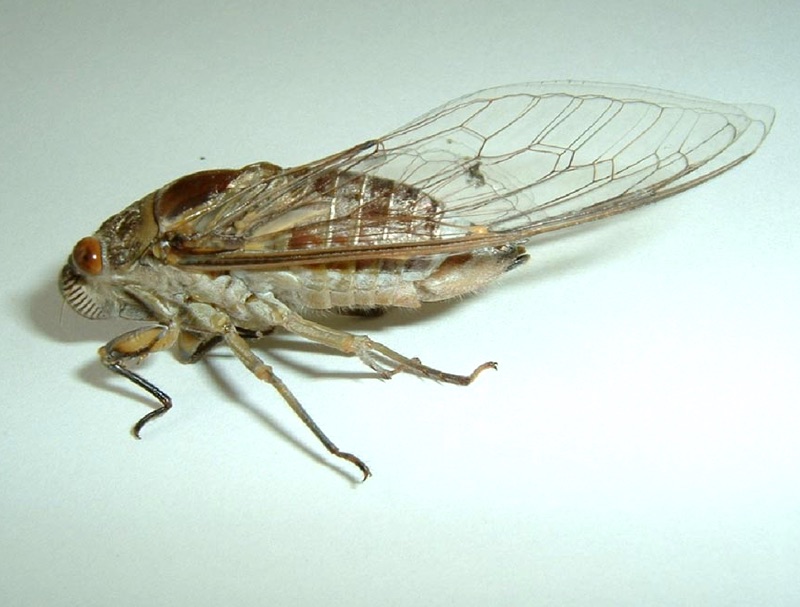
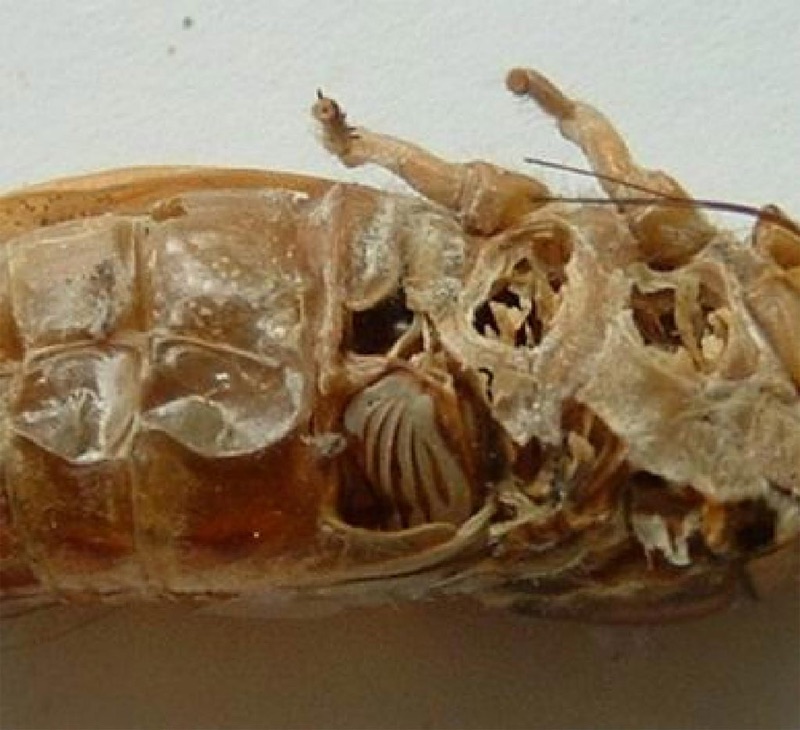
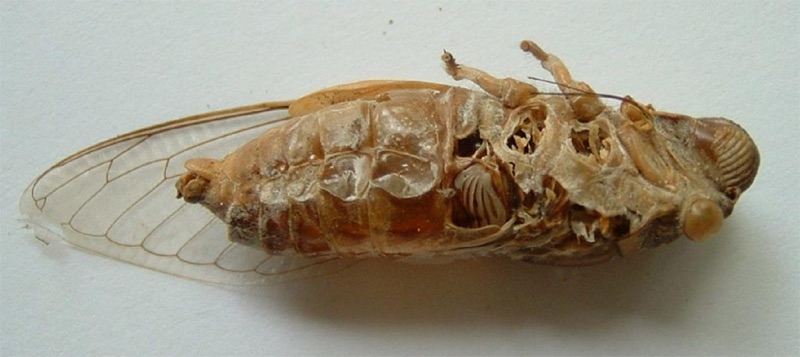
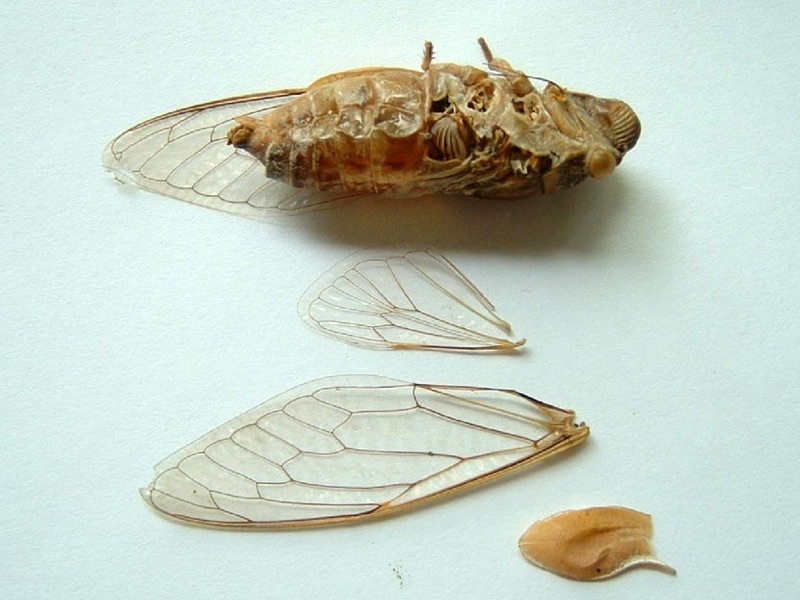
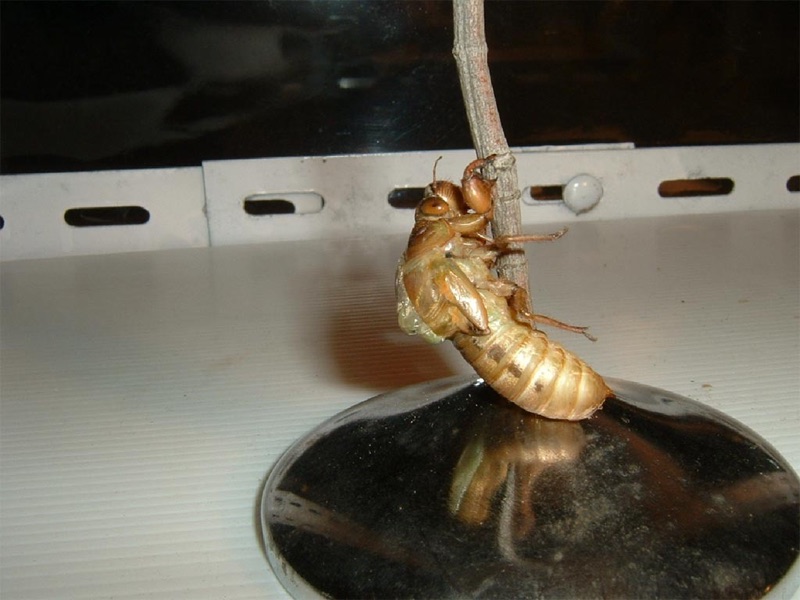
In my spare time (not a lot lately) I’ve been working on Google maps for plotting Magicicada Brood maps. I came up with a brood map for 2004 Brood X, but in it’s current state it’s very processor-intensive because it loads an XML file with about 300 entires, and each entry requires a call to Google. It’s not ready for “prime time” (still alpha, not even beta). I’m going to recode it to work off of longitude and latitude, and that should improve performance.
Hopefully people will mail us their 2007 Brood XIII sightings so I can build a Brood XIII map as well. I might even set up a form that lets people find their location on a map, and then submit it as longitude and latitude rather an actual address (for privacy reasons).
2004 Brood X map.
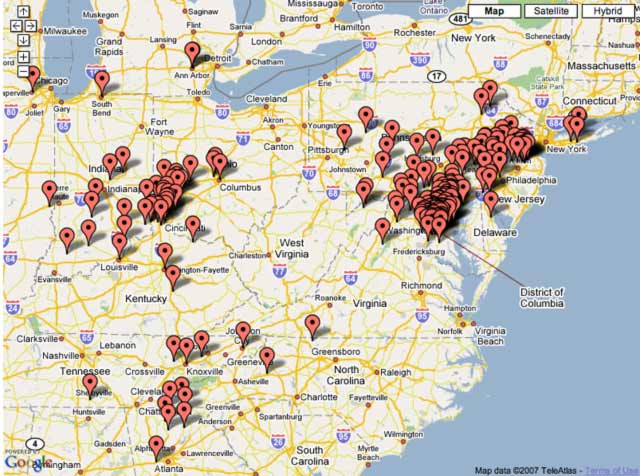
People have started asking for Brood XIII shirts and other stuff like mugs and pillows, so I made them. The cicadas will be in the ground for about 2 months but the shirts are here. I recommend that you don’t buy one unless you see (and hear) the actual cicadas. Otherwise it’s like wearing a Bahamas t-shirt without ever going there. 🙂
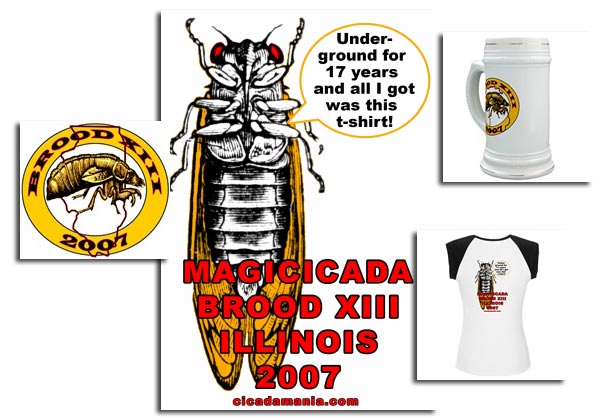
You could try this with northern Magicicada periodical cicadas, but I would avoid it for southern states like Louisiana (because you’ll get negative numbers, which will be confusing). Also, do not use temperature data from past years, because the weather is wildly variable and you’ll get a useless number.
Gene Kritsky was nice enough to send a paper he wrote with a formula for predicting the emergence date. E = (19.465 – t)/0.5136, where E = emergence start date in May and t = average April temperatures in °Celsius. His formula worked like a charm for predicting the Brood X emergence in Cincinnati. 80% of his sites had begun the emergence on the predicted date of May 14th of that year. Also when the ground temperature reaches a consistent ° Celsius that is another good sign the emergence is about to begin.
Try it out:
Updated: we updated the form to accept 3 numbers past the decimal in case you have super-precise temperature information.
To find the Average Mean Temperature in Celsius on the Weather Underground site:
Thanks to Roy Troutman and Gene.
Weird Meat: Cicadas in Jinan. Weird Meat is a blog about non-Western food (no cows and chickens) like cicadas. Check it out.
So minutes later, we had a huge plate of fried bugs. I’d say about a hundred of these little bite-size insects were deep-fried crispy. Everyone liked them. Even my friend Boya from Texas, usually not as adventurous a diner, enjoyed them.